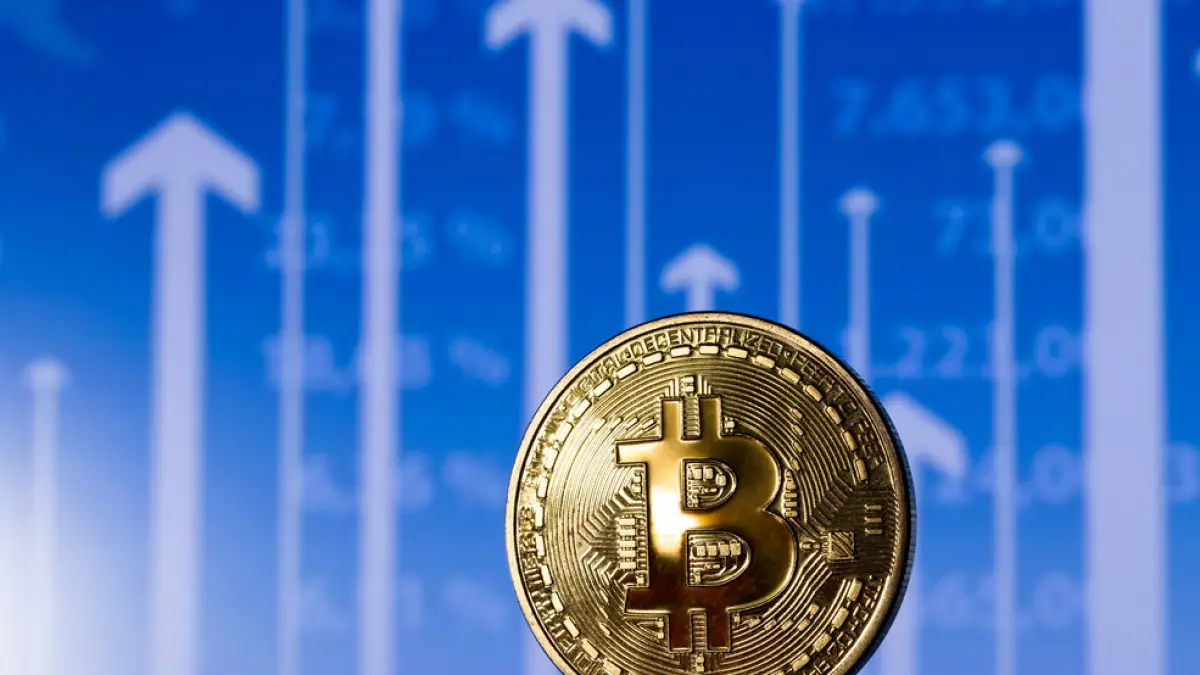You don’t need to be an investor, tech enthusiast, or a futurist to have come across the term “Bitcoin”. Even if you’re just a curious bystander, the world’s first digital, decentralized currency is hard to ignore. The buzz about Bitcoin is not just about its meteoric rise in value; the real marvel lies in its decentralization. It’s a feature that has the potential to revolutionize financial systems and redefine the concept of currency value.
Decentralization, in the context of Bitcoin, means the absence of a central authority or intermediary controlling its creation, distribution, and regulation. This is a game-changer in the world of finance, an industry long ruled by centralized institutions like banks and governments. It’s a unique attribute that takes us beyond the borders of conventional financial landscapes, promising transformative advantages and benefits.
Contents
- Understanding Currency Value and its Traditional Metrics
- The Centralized Financial System and its Limitations
- Bitcoin’s Decentralized Nature: A Paradigm Shift in Currency Value
- The Role of Blockchain Technology in Ensuring Bitcoin’s Decentralization
- Exploring the Economic Implications of Bitcoin’s Decentralization
- Resistance to Inflation and Government Interference
- Conclusion
Understanding Currency Value and its Traditional Metrics
Currency value is a complex and multifaceted concept. In essence, it represents a currency’s purchasing power, the number of goods or services you can buy with a unit of that currency. However, numerous variables can influence this, such as supply and demand dynamics, economic stability, and government policy. These metrics have historically been influenced, manipulated, or controlled by centralized institutions.
Traditional metrics of currency value at trading platforms like quantum-ai.trading is generally tied to a nation’s economic health. Parameters like gross domestic product (GDP), inflation rates, interest rates, and unemployment levels play a significant role in determining a currency’s value. Additionally, geopolitical events, economic forecasts, and international trade balances can also cause currency value fluctuations.
However, such traditional measures of value often overlook significant factors like technological advances, individual freedoms, and the democratic distribution of wealth. These elements, inherent in Bitcoin’s design, bring about a fresh perspective on currency value. It’s a change that sets the stage for a deep dive into the limitations of the centralized financial system.

Source: outlookindia.com
The Centralized Financial System and its Limitations
The centralized financial system, with banks and governments at its core, has long been the mainstay of global commerce and wealth management. However, it isn’t without its flaws. Inefficiencies, inequities, and vulnerabilities are hardwired into this system, and they become glaringly obvious in times of economic crises.
One of the significant limitations of the centralized financial system is the concentration of power and control. The decision-making lies with a few entities, which can lead to economic policies that favor specific groups, creating income disparity.
Additionally, centralized systems can be prone to corruption, bureaucratic red tape, and inefficiencies, slowing down financial transactions and increasing costs.
This centralized control can result in arbitrary changes in monetary policy, including the manipulation of inflation rates and the supply of money, which can lead to economic instability. It is within this backdrop that Bitcoin’s decentralized nature starts to appear as a breath of fresh air, offering a groundbreaking alternative.
Bitcoin’s Decentralized Nature: A Paradigm Shift in Currency Value
Bitcoin’s decentralized nature is not just a technical characteristic; it’s a philosophical revolution. It challenges the conventional wisdom that a currency’s value is defined and controlled by centralized entities. Bitcoin’s value lies in its fixed supply, its secure, tamper-resistant design, and the democratic accessibility it offers to users worldwide.
At the heart of Bitcoin’s decentralized model is the principle of consensus. Instead of a central authority making decisions, Bitcoin’s protocol allows for decisions based on the agreement of the majority of its network participants. This decentralized decision-making process eliminates the risk of manipulation by a single entity.
Furthermore, Bitcoin’s fixed supply of 19 million coins is a bold departure from traditional currencies that central banks can inflate indefinitely. This scarcity attribute adds to Bitcoin’s value, introducing a metric rarely seen in traditional currency valuation models – digital scarcity. As we delve deeper, we’ll see how blockchain technology, the backbone of Bitcoin, ensures Bitcoin’s decentralization.

Source: cointelegraph.com
The Role of Blockchain Technology in Ensuring Bitcoin’s Decentralization
Blockchain technology, the engine powering Bitcoin, ensures its decentralized nature. It’s a public, transparent, tamper-resistant ledger that records every transaction ever made on the Bitcoin network. What makes it special, though, is the decentralized design that sets it apart from conventional databases controlled by single entities.
The blocks in the blockchain are maintained by nodes – computers participating in the Bitcoin network. Each node has a copy of the blockchain, and any change in the blockchain must be verified by the majority of nodes. This structure prevents any single entity from altering the blockchain, reinforcing Bitcoin’s decentralized nature.
Blockchain technology has implications far beyond just recording transactions. It’s the pillar that enables the Bitcoin network to operate autonomously, without the need for a central authority. It’s a powerful testament to the potential of decentralization in creating a fair, transparent, and secure financial system.
Exploring the Economic Implications of Bitcoin’s Decentralization
Bitcoin’s decentralized model carries profound economic implications. It offers an alternative to the central banks’ monopoly over currency issuance and control, enabling a truly free market for money where value isn’t dictated by centralized decisions but by market dynamics.
This model brings about greater financial inclusion. Bitcoin can be accessed and used by anyone with an internet connection, providing an opportunity for the unbanked and underbanked to participate in the global economy. It also allows for faster and cheaper cross-border transactions, breaking down geographical and political barriers to financial access.
Moreover, Bitcoin’s decentralized model challenges the age-old paradigm of trust in financial transactions. With Bitcoin, trust is no longer placed in a central authority but in the protocol itself. This shift has the potential to engender a new era of trustless transactions, promoting transparency and mitigating corruption.

Source: unsplash.com
Resistance to Inflation and Government Interference
Bitcoin’s decentralized design also confers resistance to inflation and governmental interference. Its supply is capped, eliminating the risk of inflation through overprinting – a common issue with fiat currencies. This attribute safeguards purchasing power, making it an attractive store of value, especially in countries with high inflation rates.
In terms of government interference, this asset operates beyond the reach of any single government or institution. It provides a way for individuals to maintain their wealth in a secure, digital form that can’t be confiscated or devalued by any government’s unilateral decision. This level of autonomy and freedom is unprecedented in the history of money.
Nevertheless, this resistance to external interference doesn’t mean that Bitcoin is immune to volatility. Its price is still subject to market dynamics, driven by supply and demand. However, this volatility is a separate issue from the decentralized advantage that this asset offers.
Conclusion
Bitcoin’s decentralized advantage signals a fundamental shift in our understanding of currency value. Its transformative potential could redefine how we perceive and interact with money, promising a future where the control of wealth and financial freedom rests more evenly in the hands of individuals worldwide.
